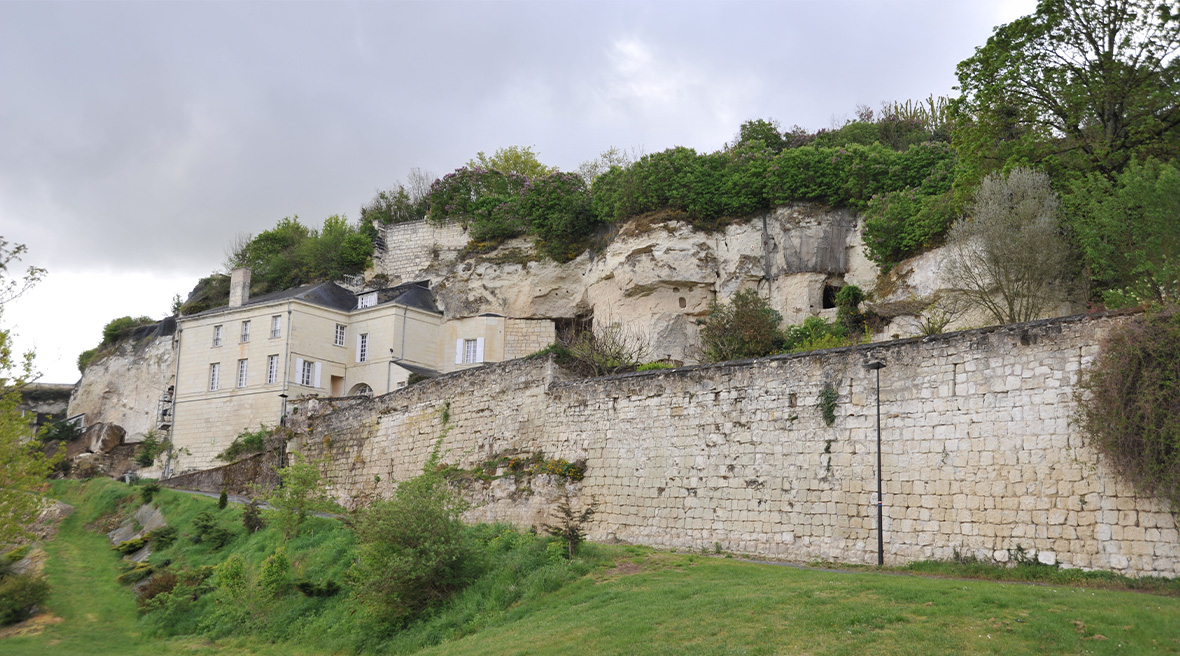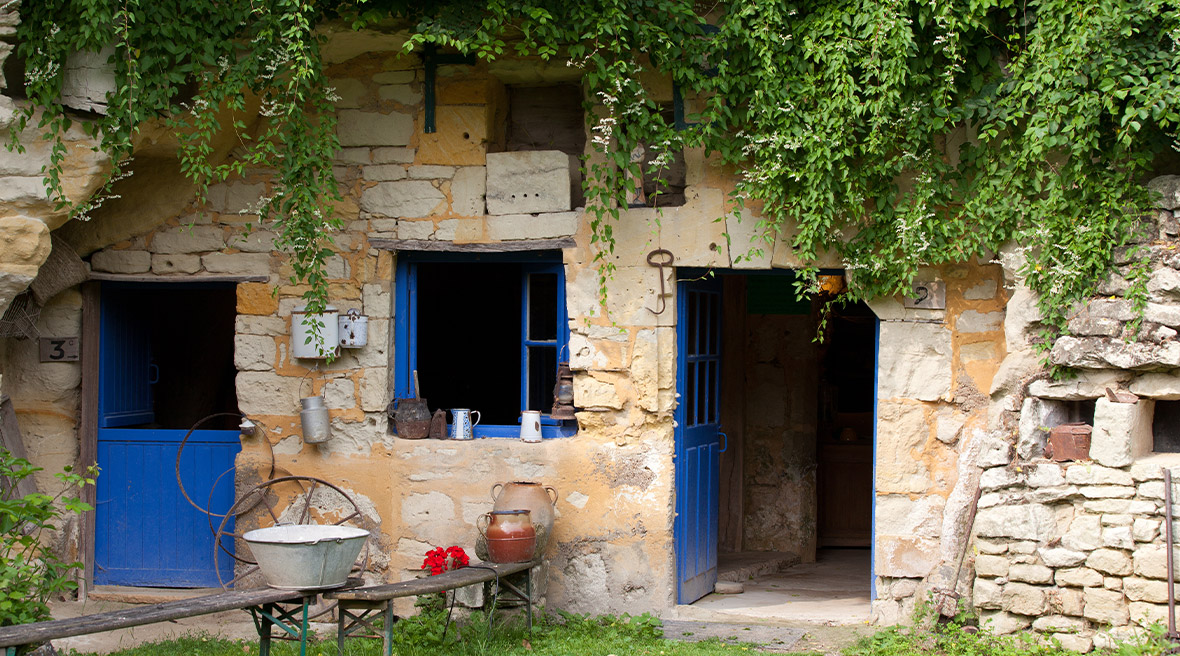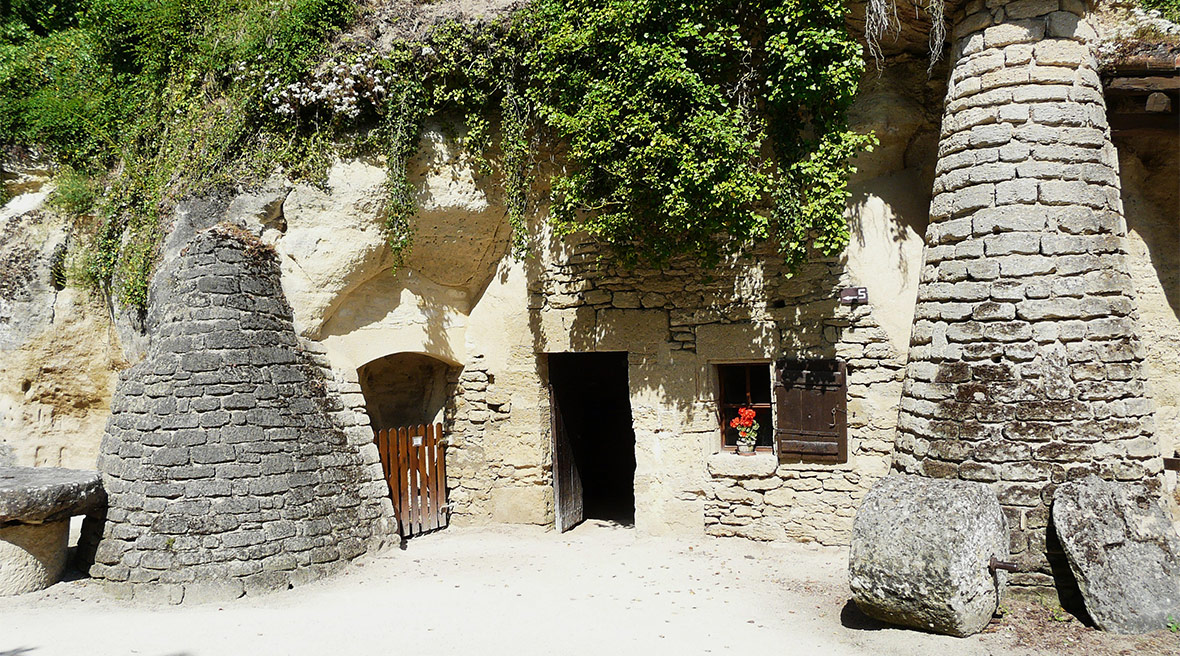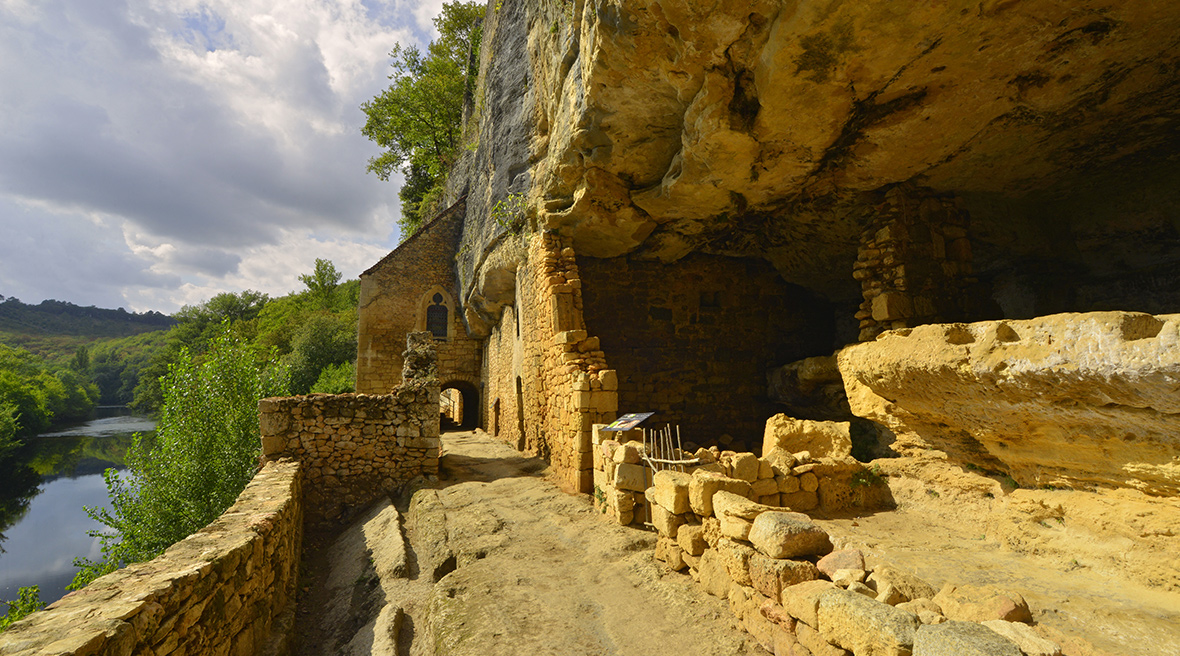The French countryside is full of incredible landscapes, just waiting to be discovered, and few French treasures are more interesting than the troglodyte caves of the Loire Valley. These beautiful cave-like houses, carved into tufa limestone cliffs, were used for hundreds of years as dwellings by local people.
Today, as well as homes they are museums, restaurants, wine cellars, shops – and also increasingly popular places to stay. There are even luxury troglodyte hotels!
What are the troglodyte caves?
Historically, the caves were used for places of residence by the Loire Valley’s less wealthy inhabitants. You can find many examples of the caves throughout the Loire Valley, and most of them are still used today. Given the vineyards of this region, it is no surprise that their location and material mean the caves were and often still are used for storing wine, with rooms staying cool in the summer and cosy and warm in the winter.
Where are the troglodyte dwellings?
The troglodyte caves are mostly to be found in the Loire Valley, which is around a five-hour drive from Calais, but there are some caves to be found in the Dordogne region too.

Many troglodyte villages in France incorporate modern houses
The enchanting troglodyte dwellings at Saumur
Nestled between the river Loire and the river Thouet, Saumur is an enchanting destination in the Maine-et-Loire department. Dating back to the fourth century BC, Saumur was originally only home to the troglodyte caves and their inhabitants. The caves were first excavated to harvest the tuffeau limestone, which was formed over 90 million years ago when the Loire Valley formed the floor of a great ocean.
Many of the caves are still in use today, either by residents looking for a simpler way of life, those making and maturing wine or as holiday accommodation. If you’re looking for a troglodyte cave nearby to stay – with its own cavernous swimming pool – check out Demeure de la Vignole, just 10 minutes’ walk from Saumur.
Doué-la-Fontaine
Doué-la-Fontaine is a striking commune, near to Saumur. Offering vast troglodyte caves to discover, Doué-la-Fontaine is popular with anyone who wishes to explore French history. Within the Regional Natural Park of Loire-Anjou-Touraine, you can walk through silent caves with high vaulted ceilings, visit the town’s history museum, the Musée “Aux Anciens Commerces”, and the Zoo de Doué, a 14-hectare zoo home to about 100 different animal species.
This area is fantastic for both cycling and horse riding, with many paths coursing through local vineyards. Stay in a real troglodyte cave when you sleep at Logis Hôtel Rocaminori, in Rochemenier, just outside of Doué-la-Fontaine.
La Fosse-de-Tigne

The troglodyte cave at La Fosse-de-Tigne
Just 34 kilometres from Angers, La Fosse-de-Tigne is home to a quaint troglodyte cave, which is still used as a house today. Maisons Troglodytes de Forges is open daily to visitors for just a few euros, existing as the first private troglodyte cave which was opened in 1979.
You can take a free tour of the site, which has a maze of cave systems and a farm, while the front of the property is beautifully-decorated with vines and painted wood. It’s a really pleasant place to visit, with owners who are happy to host and educate anyone who wishes to learn about this part of French history.
Louresse-Rochemenier
In sleepy Rochemenier, near Doué-la-Fontaine, is an entire troglodyte village – a labyrinth of caves that were inhabited from the Middle Ages to the 1930s. The caves have been preserved as a museum, and visitors can take self-guided tours through the 20 rooms. You wander through living spaces, kitchens, bedrooms, wine cellars, workshops and stables, all the while being amazed at the resourcefulness of the people that lived and farmed here.

Credit: Père Igor, CC BY-SA 3.0, via Wikimedia Commons
The village at Rochemenier is now a fascinating museum
Montrichard-Val-de-Cher
Of all the troglodyte caves in this stunning region of France, perhaps the ones cut into the stony hillside overlooking the Cher river at Montrichard-Val-de-Cher are the most memorable. They are certainly the most picturesque, and possibly the most cared for too. Le Magnanerie de Bourré is a family home and the site of a working silkworm farm – as it has been since the 17th century. The family run guided tours around the caves and the farm, and give fascinating insights into their age-old industry and what it is like to live in a troglodyte cave.
La Madeleine, Dordogne

The cave site at La Madeleine is one of the most archaeologically important in France
In France’s Dordogne region, further south, you can find a quaint troglodyte village by the name of La Madeleine. Not too far from Tursac, the caves found here are the best example of their kind in the area.
These dwellings are far more basic than the shelters found in and around the Loire Valley, and much, much older – in fact, they are prehistoric! Hunter-gatherers would have used these caves almost 20,000 years ago. Because of its great antiquity and unique cave paintings it is unfortunately not possible to visit the prehistoric site close-up, but halfway up the cliff is the troglodyte village which dates back to the 8th century and is equally fascinating.
Visit the troglodyte dwellings with LeShuttle
These ‘rock caves dressed in coats of ivy’, as the French novelist Balzac called them, are like something out of a fairytale. Begin your journey to see them with LeShuttle and a crossing from Folkestone to Calais in only 35 minutes.